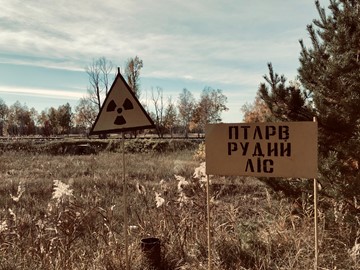Nearly 35 years ago, the city of Chernobyl was forever transformed due to the nuclear disaster at the No. 4 reactor in the Chernobyl Nuclear Power Plant resulting in nearly 350,000 citizens evacuating the Ukrainian city. Over the years, the nuclear disaster site has remained devoid of humans due to the heavy radiation levels with Ukrainian authorities claiming the area may not be suitable for humans for another 24,000 years.
Without a thriving human population in the area, the Chernobyl Exclusion Zone acts as a natural nature reserve covering 2,800 square kilometers where endangered species are thriving. The Exclusion Zone is one of the most radioactively contained areas globally, with over 400 hectares of the surrounding flora, fauna, and water sources contaminated following the nuclear disaster.
Scientists were surprised to find a thriving rewilding ecosystem as a nature reserve for endangered species as the area’s biodiversity increased rapidly over the past three decades. Researchers from Ukraine and Belarus have recorded hundreds of plant and animal species, including more than 60 rare species.
The Exclusion Zone is home to rare species, including the vulnerable European bison, lynx, and the rare endangered Przewalksi’s horse. This species of horse is native to Central Asia, with previous efforts deliberately released into the area as a part of conservation efforts.
Researchers found an increase of animals 10 years following the disaster with more boar, elk, roe, deer, and wolves. The health of these animals remains unknown because collecting sufficient data to monitor the health of these wild animals with many scientists concerned by the harmful effects of radiation exposure will impact the species.


